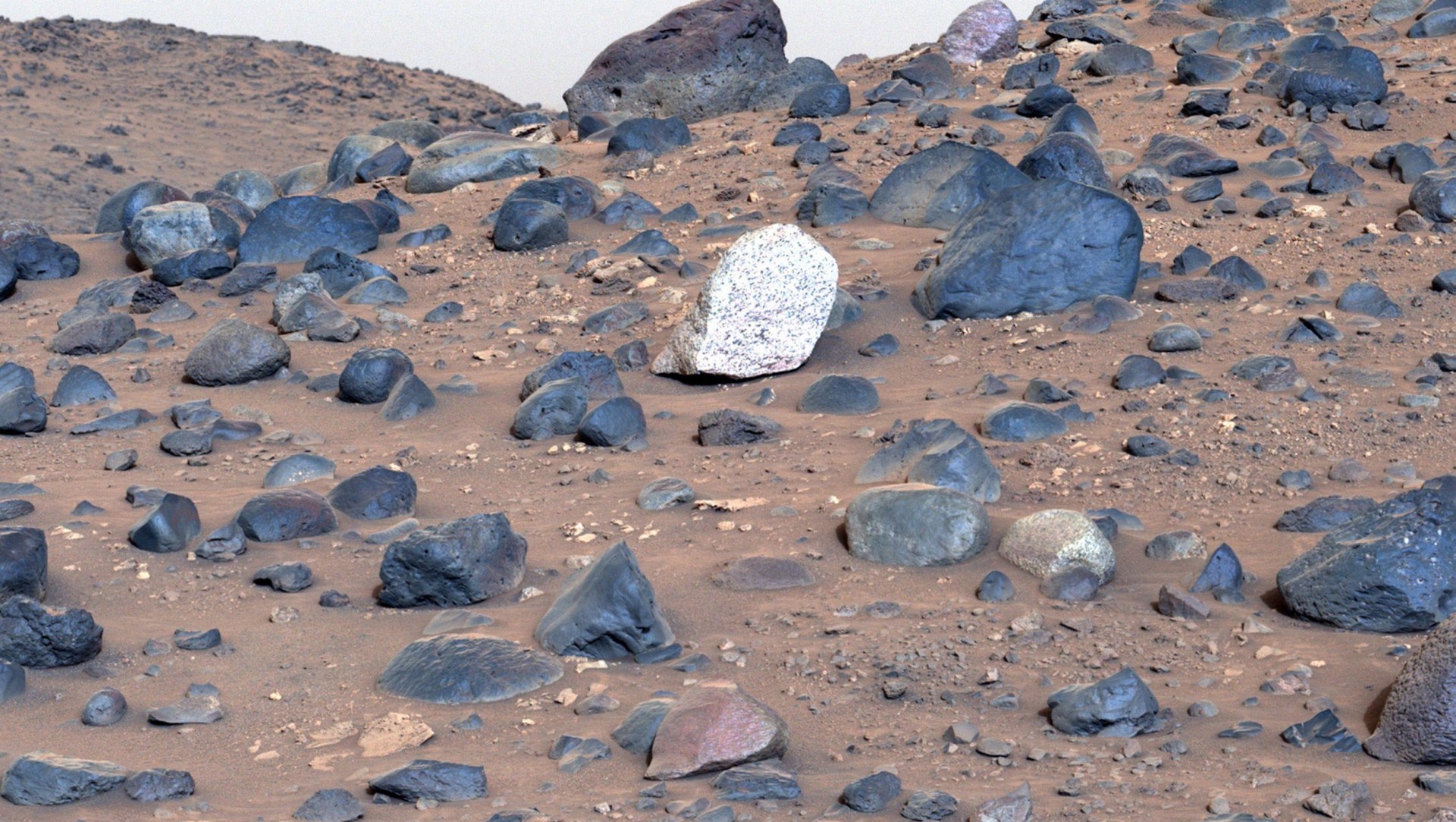
DAZZLING MYSTERY ON MARS LEAVES SCIENTISTS BAFFLED
There’s a mystery brewing on Mars.
Scientists say they are puzzled over a bright white rock never seen before on the Red Planet.
The 14-inch-high boulder stands out among a large field of dark rocks and is described as ‘the first of its kind’.
Nasa’s Perseverance rover spotted it at Mount Washburn, a region the space agency say is a hill covered with ‘intriguing boulders, some of a type never observed before on Mars’.
Brad Garczynski of Western Washington University, the co-lead of the current science campaign, said: ‘The diversity of textures and compositions at Mount Washburn was an exciting discovery for the team, as these rocks represent a grab bag of geologic gifts brought down from the crater rim and potentially beyond.’
‘But among all these different rocks, there was one that really caught our attention.’
Nicknamed Atoko Point by researchers, the boulder is 18 inches wide and has speckles on a light-toned surface.
Analysis by Perseverance’s SuperCam and Mastcam-Z instruments indicates that the rock is composed of the minerals pyroxene and feldspar. Pyroxene is commonly found in meteorites that fall to Earth and lava.
Nasa said: ‘In terms of the size, shape, and arrangement of its mineral grains and crystals – and potentially its chemical composition – Atoko Point it is in a league of its own.’
Some Perseverance scientists speculate the minerals that make up Atoko Point were produced in a subsurface body of magma that is possibly exposed now on the crater rim.
Others on the team have suggested the boulder may have been created far beyond the walls of Mar’s 28 mile-wide Jezero crater and transported there by the ‘swift Martian waters’ eons ago.
‘Either way, the team believes that while Atoko is the first of its kind they’ve seen, it won’t be the last,’ added the space agency.
A key objective for Perseverance’s mission on Mars is astrobiology, including caching samples that may contain signs of ancient microbial life.
The rover will characterise the planet’s geology and past climate, with the aim to pave the way for human exploration of the Red Planet, and be the first mission to collect and cache Martian rock and regolith for return to Earth.
Get your need-to-know latest news, feel-good stories, analysis and more by signing up to Metro's News Updates newsletter
2024-06-21T08:23:16Z dg43tfdfdgfd